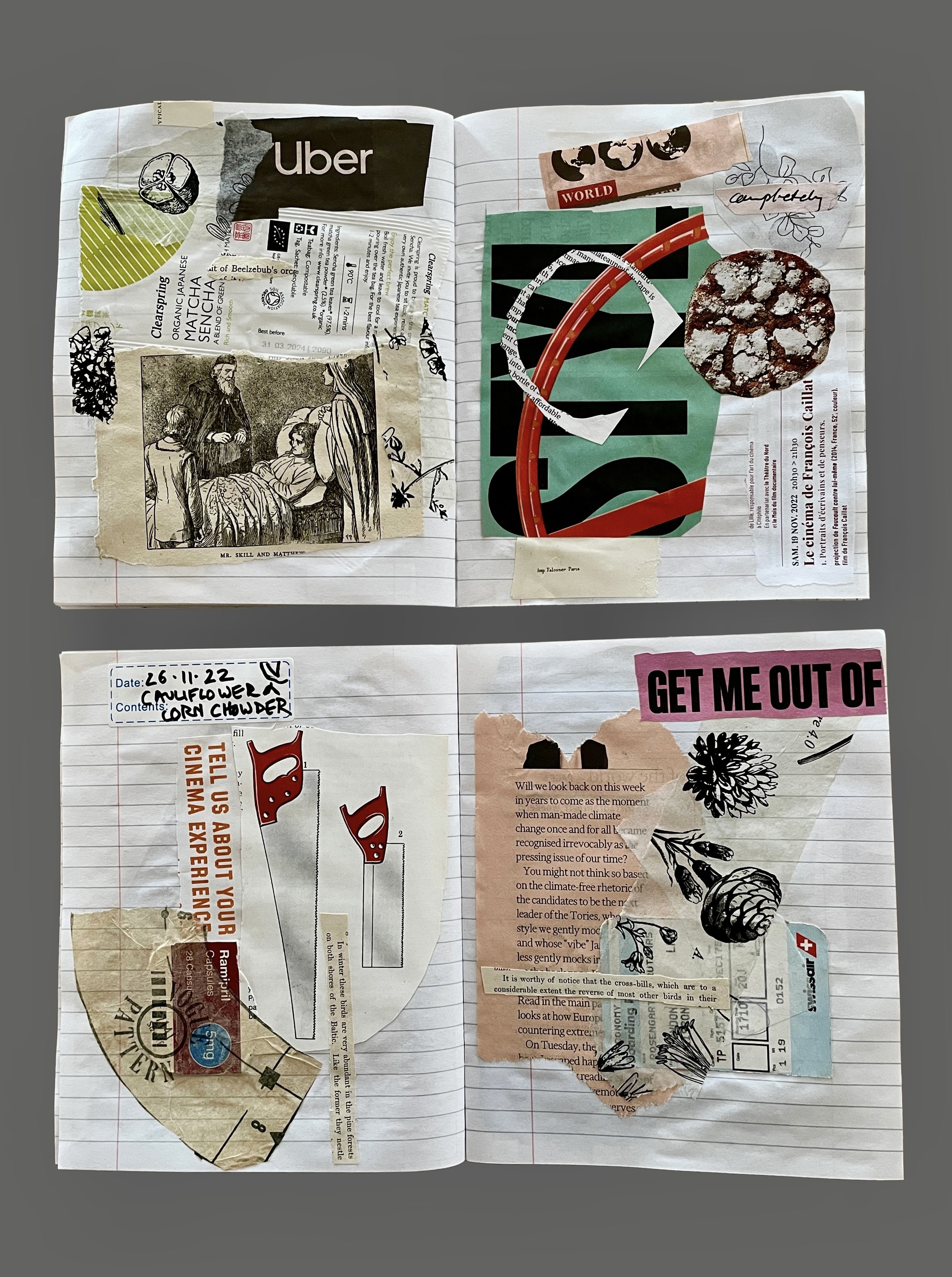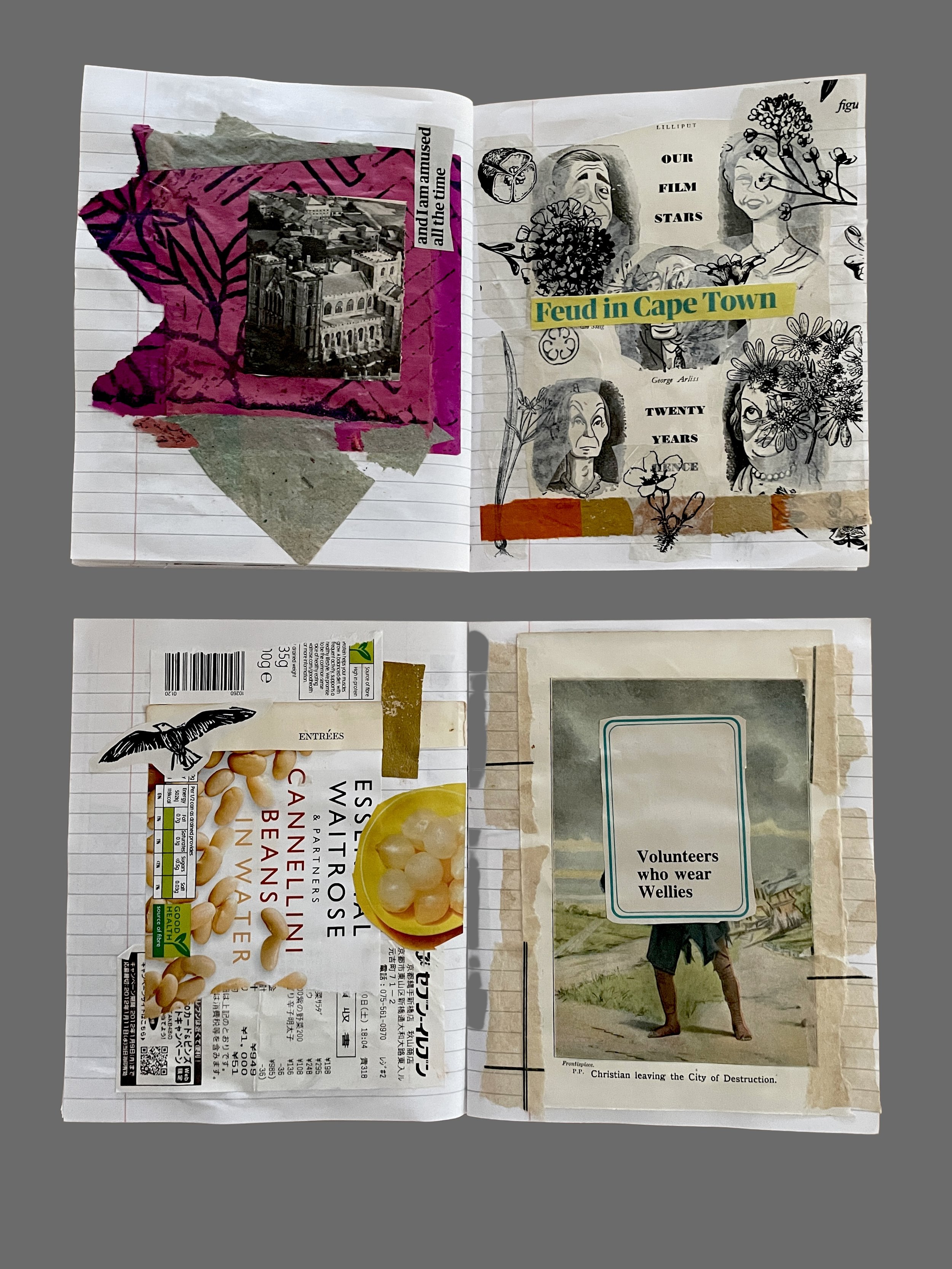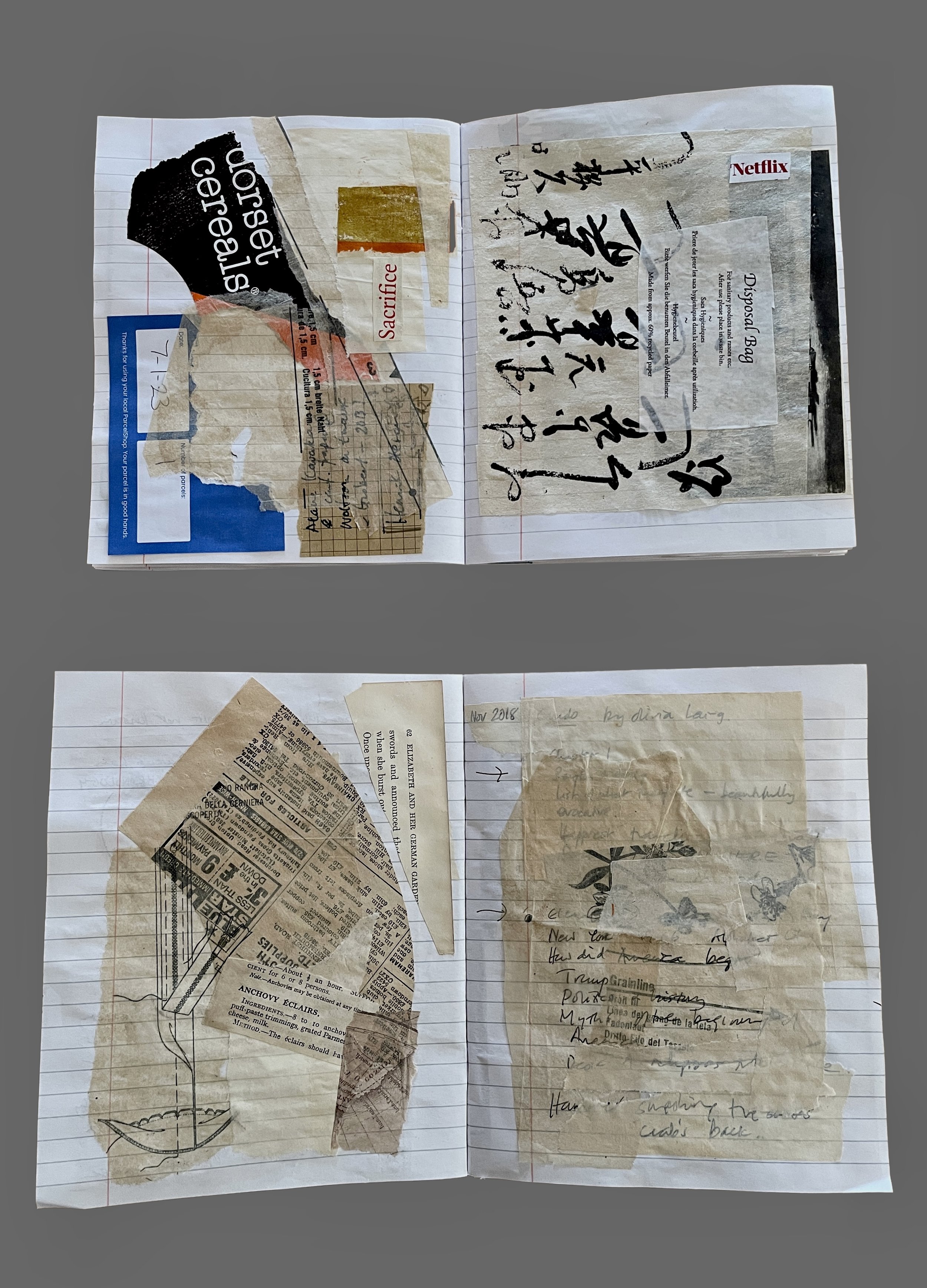books of ongoingness (2022—ongoing)
When I moved back to England from Portugal in 2002, I began preserving receipts and tickets for everything: things that had granted me access to transport, cinemas, theatre, exhibitions, parking and so on. Together, they constituted a kind of ongoing archive of my life, a record of the ephemeral stuff that filled the ongoingness of my days.
I always thought I would make some kind of über-collage out of all these bits of paper, or build something with them, and it just never happened. I prefer the small to the large, the minor key to the major. So, abandoning the idea of anything comprehensive, I began using the stuff in and for collages. Some of you will have seen some of them on my instagram page, and a few will be reproduced in the next edition of Arts+Letters to be published in 2023.
Then in the autum of 2022, I found some a dozen old exercise books I’d bought years ago and never touched. So I began using them as collage journals. They are not systematic in any visual or conceptual sense, but in them, I track my daily life through its material (and specifically, paper) traces. I let myself get carried by the torn bits of paper: their arrangement happens almost unconsciously. Yet looking at them as a small collection, I can see that they are made with a sense of design that must be my own, but that I cannot quite define. I’ve titled the ongoing series The Books of Ongoingness.
This is an evolving archive of gathered ephemera. Several people who have seen some of my Books of Ongoingness —whether IRL or virtually on Instagram— comment on them as scrapbooks. I don’t see them as scrapbooks. A scrapbook provides a frame for collecting and preserving memorabilia. The nature of the items kept in a scrapbook is sentimental (in the best or least judgemental meaning of that term, which I wish to reclaim), documentary, archival, however artful or decorative or inventive its presentation.
These are more in keeping with what used to be called commonplace books or florilegia, in which were amassed existing fragments, often quotations. Auden’s commonplace book “A Certain World” is famous, and Walter Benjamin’s writing has the idea of the fragment and quotation embedded in it. The etymology of "commonplace" is loci communes, common places, shared places where existing knowledge could be organised and preserved. The fragments and bits I have preserved are (readymade) material remnants of my daily living, the ongoingness of the kitchen and bathroom, the study and studio, my life in making and reading, as well as my life as a dogmama. In my studio there are many offcuts of older papers that I use in my other, ‘proper’ collages (envelopes and tickets from long ago, notes, bits of vintage and origami and washi papers I have kept over the years, pages of books I use in erasure texts and more.





































